SUMMARY
This is AI generated summarization, which may have errors. For context, always refer to the full article.
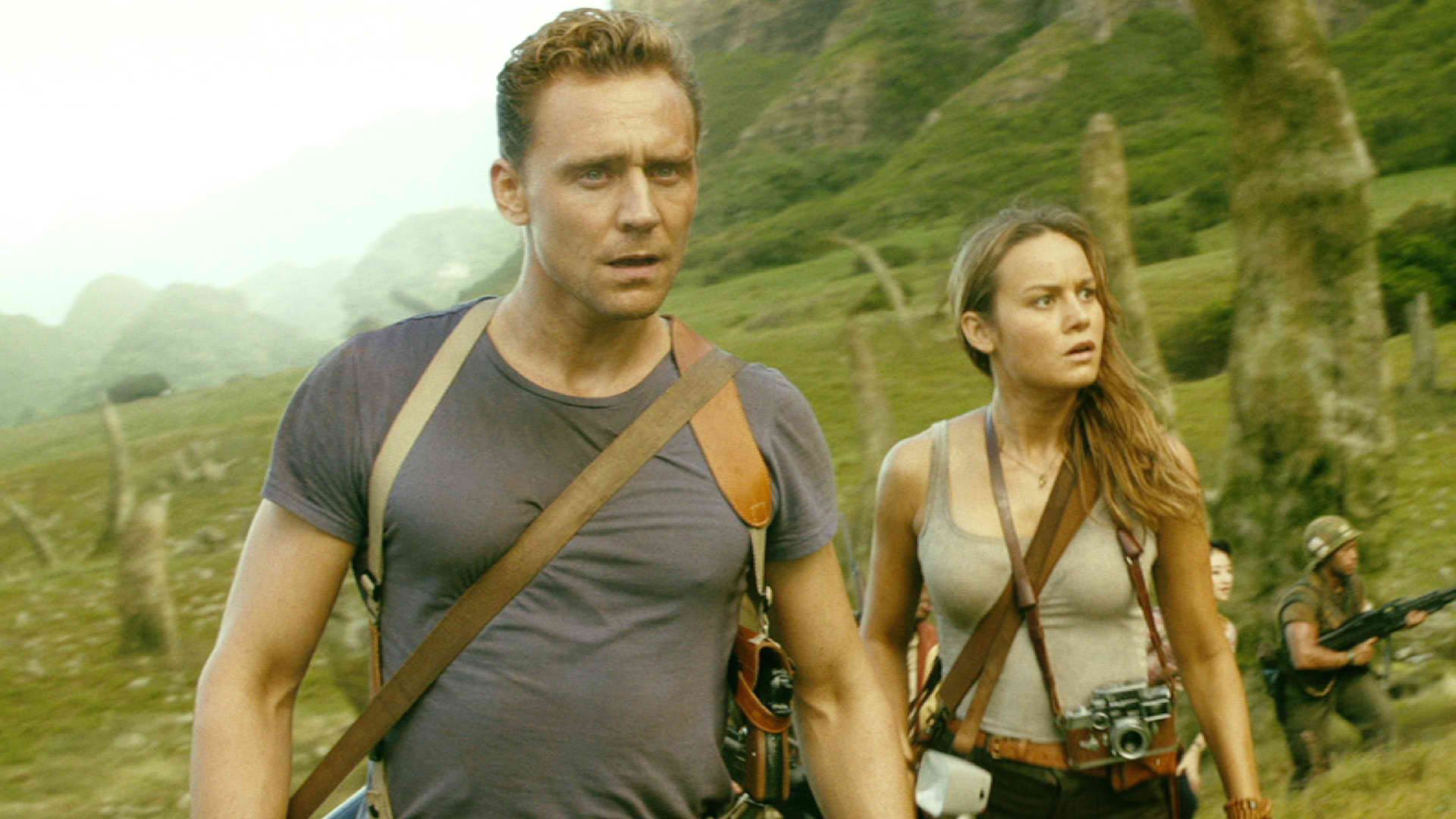
Jordan Vogt-Roberts intuitively opens Kong: Skull Island with a brutal and bloody clash between an American pilot and his Japanese counterpart. Their World War II planes have crashed in the middle of an uncharted island and they’re busy trying to kill each other, when they encounter the titular colossal ape. They end their clash out of sheer awe and disbelief.
Contextualizing Kong
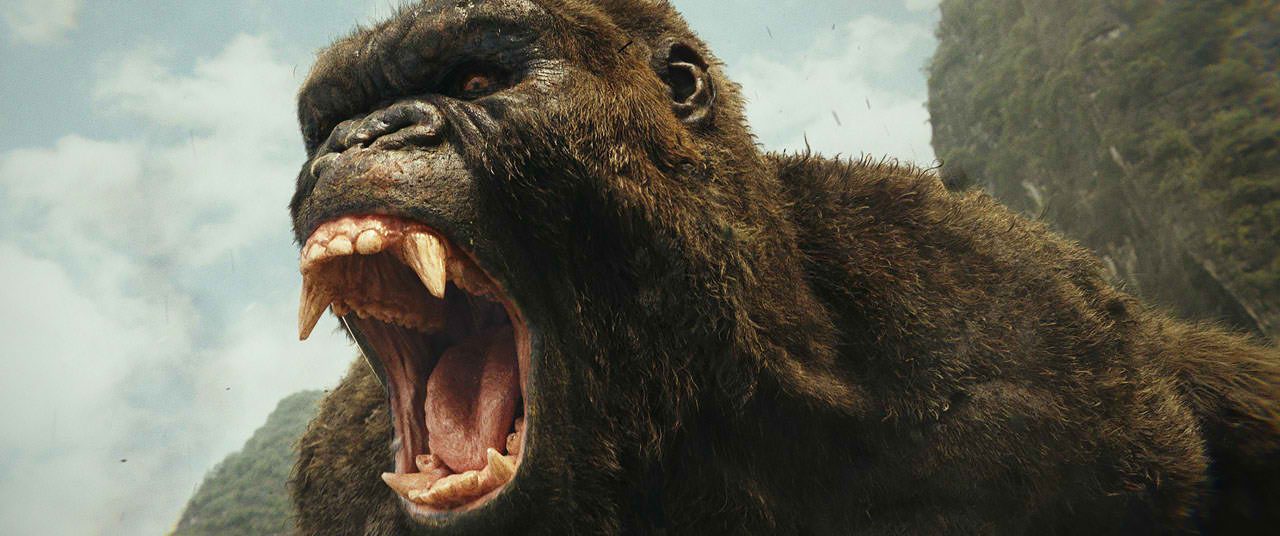
Vogt-Roberts places Kong, who was first seen in 1933 famously carrying a beauty on top of the Empire State Building, within the context of familiar history. This isn’t just a cursory back-dropping of fable against a timeline that is based on real events. The film consciously picks on eras beset by warfare, where powers disastrously force themselves and their beliefs on a world and taint it permanently.
A lot has indeed happened to the world since that introductory squabble. America has won the Pacific War, and has instantly turned into a military superpower and a self-appointed keeper of world order.
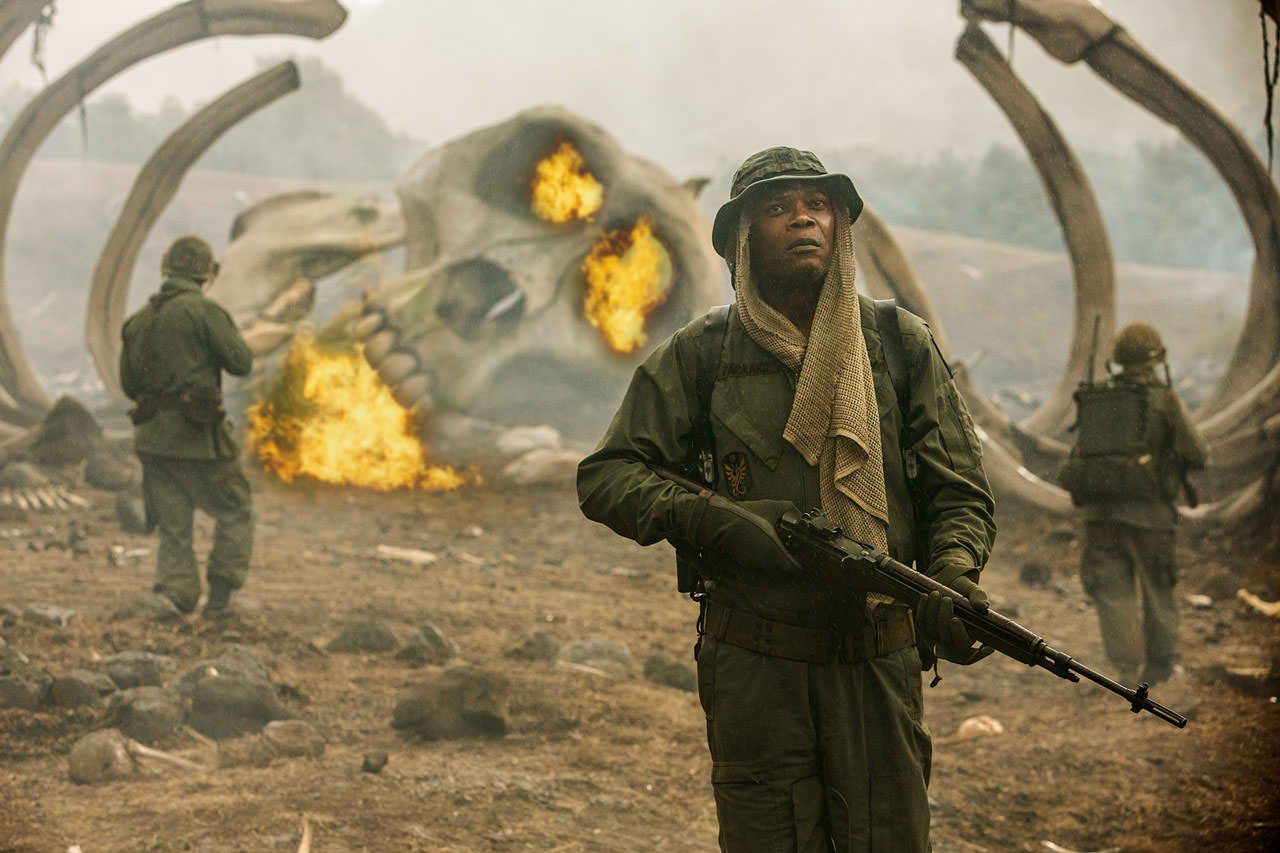
Kong: Skull Island is set during the Vietnam War, where America is at the vulnerable center of other nations’ conflicts. In its decades-long effort to preserve democracy around the world, it also fosters a rivalry with Communist Russia. Scientists Bill (John Goodman) and Houston (Corey Hawkins) use this rivalry to convince the American government to send an expedition to the uncharted island in the guise of mapping it. In truth, they want to fish Kong out of hiding and use him for some mysterious purpose.
The duo forms a team to accompany them, plucking war-weary mercenary James Conrad (Tom Hiddleston) and military commander Preston Packard (Samuel L. Jackson), along with his loyal battalion, out of Vietnam. Documenting the expedition is anti-war photojournalist Mason Weaver (Brie Larson).
A monster-filled war flick
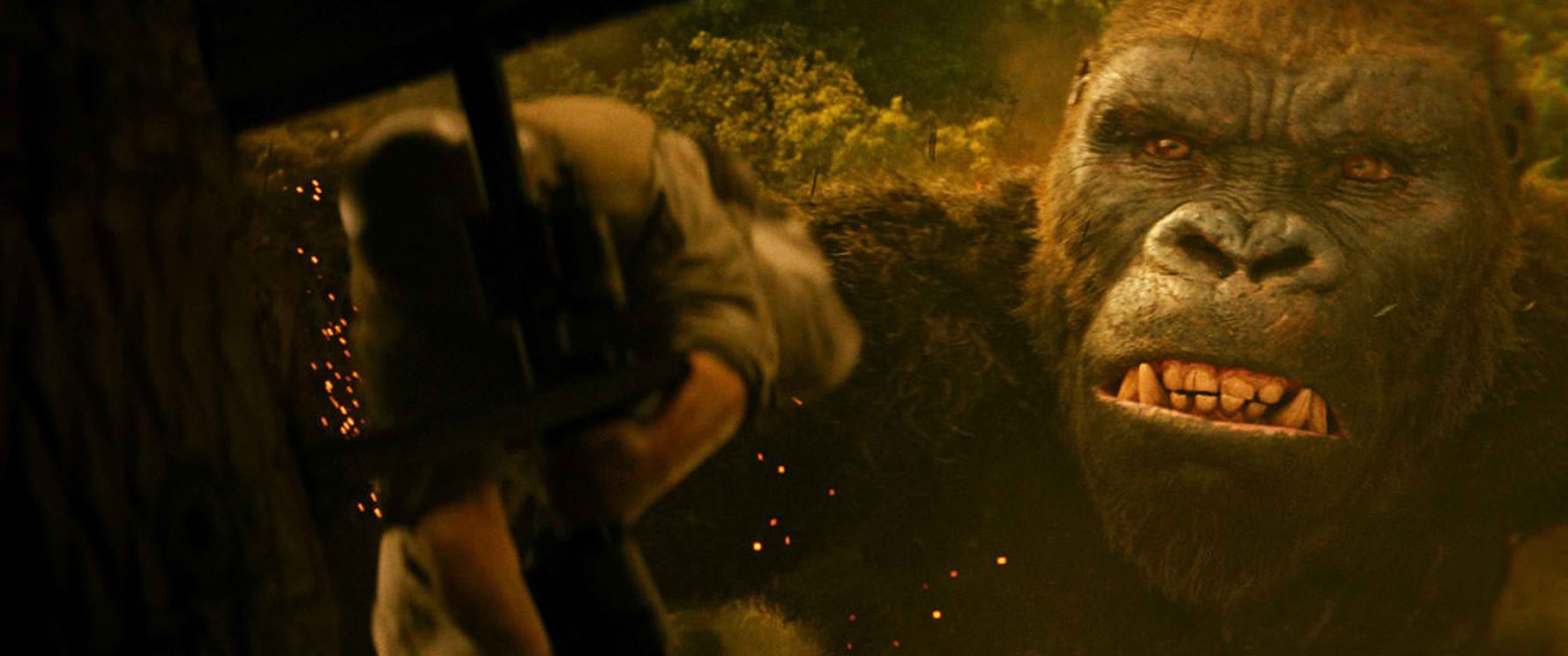
While Kong: Skull Island revels in the timeless charms of monster movies, it does so through the overt grooves of a war flick.
Vogt-Roberts’ film has more in common stylistically with films like Francis Ford Coppola’s Apocalypse Now (1979) and other movies set during that contested era in American history than the 1933, 1976, or 2005 reincarnations of King Kong. Those films single-mindedly preoccupy themselves in shaping fantastic spectacles out of the giant ape and its grandiose feats, making metaphors about man’s relation with nature.
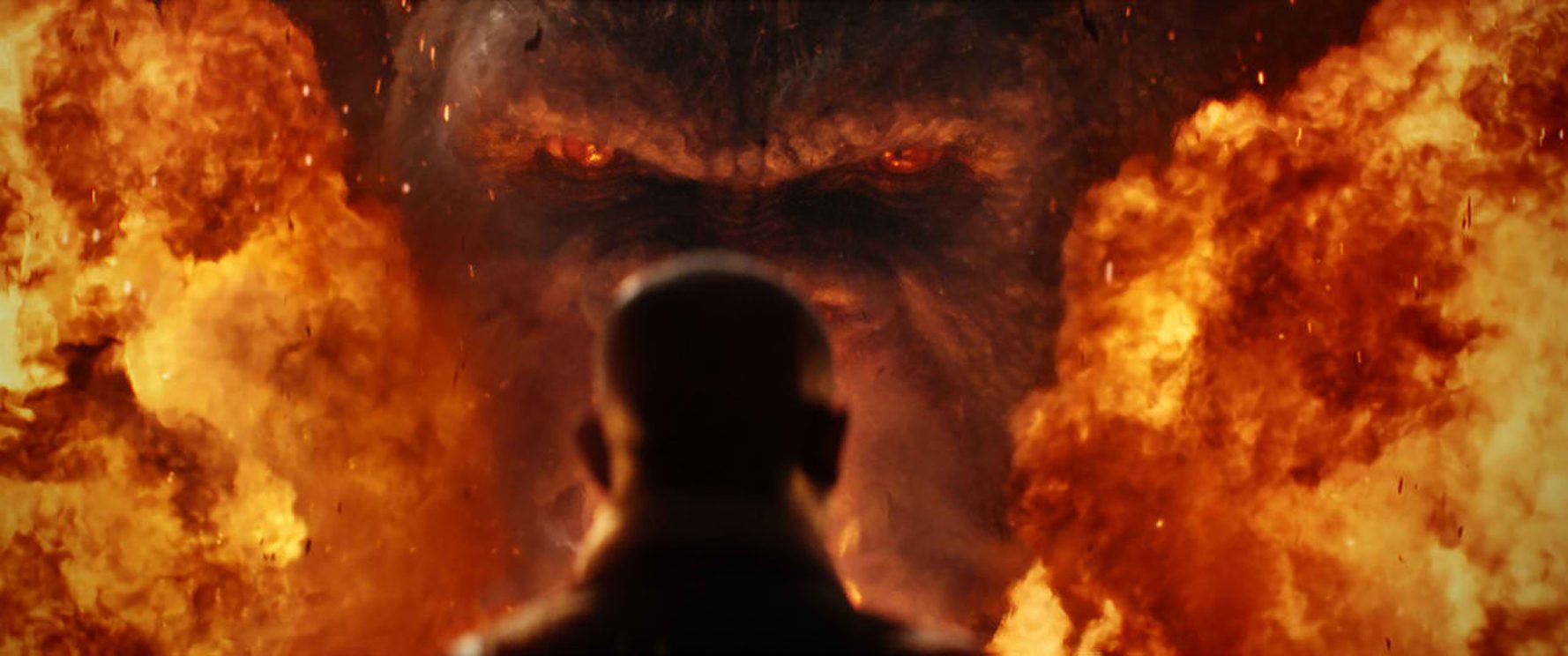
Kong: Skull Island, while never abandoning the need to astound and create wonders out of the classic beast overpowering humans plot, shapes its drama more diligently around the skewed affairs of its human characters rather than the titular monster. Its themes are timelier, more grounded on present-day politics than universal truths and conflicts.
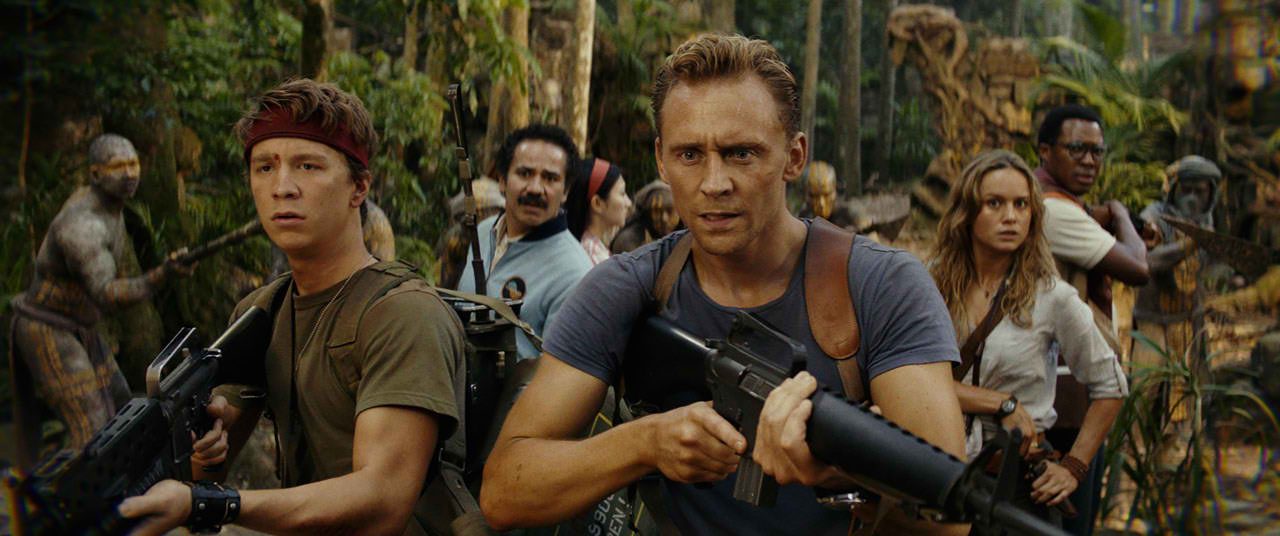
The film is certainly grittier, and the atrocities of humanity that are committed to what is foreign, unknown, and perceived to be backward are more in tune with historical realities that persist up to today. That it is set in an era where America is questioning itself for plunging into a war where it doesn’t belong certainly echoes the moralistic stance of its narrative: more-civilized-than-thou humans interfering with the fragile balance of a savage island.
On the other hand, Vogt-Roberts seems to neglect an aspect that made the previous alluring – the seemingly taboo sexual tension between the ape and the woman that caught its eye. Here, Kong is less an animal steeped in libido and more a victim of the times, and his connection with Larson’s character feels like part of his agreement with her pacifist stance than a product of his being a beast.
Dazzling escapist fluff
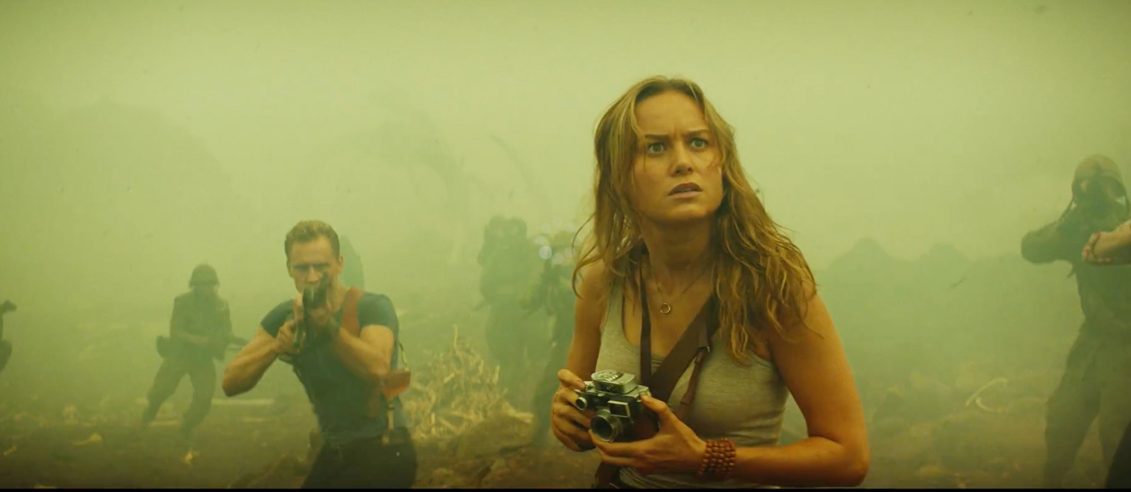
This isn’t to say that the film prefers to drown itself with unshrouded didactics.
Kong: Skull Island remains a thoroughly entertaining film. It is still abound with jaw-dropping and bizarrely humorous sequences where, all of a sudden, almighty humanity becomes puny in the midst of oversized creatures. In fact, Vogt-Roberts populates his film with all manners of violent events, from Kong throwing logs at roving helicopters to massive spiders skewering soldiers with their pointed limbs.
The film, despite an obvious effort to be more elevated in terms of pertinence, remains a franchise picture, a piece of essentially escapist fluff that dazzles more than it spends time in political discourse. There is enough to admire here, especially in the way the film manages to transform what could have been a mindless extravaganza into something more profound. But there is also a lot to be enjoyed by viewers who prefer their entertainment free of relevance. – Rappler.com

Francis Joseph Cruz litigates for a living and writes about cinema for fun. The first Filipino movie he saw in the theaters was Carlo J. Caparas’ ‘Tirad Pass.’ Since then, he’s been on a mission to find better memories with Philippine cinema.
Add a comment
How does this make you feel?
There are no comments yet. Add your comment to start the conversation.